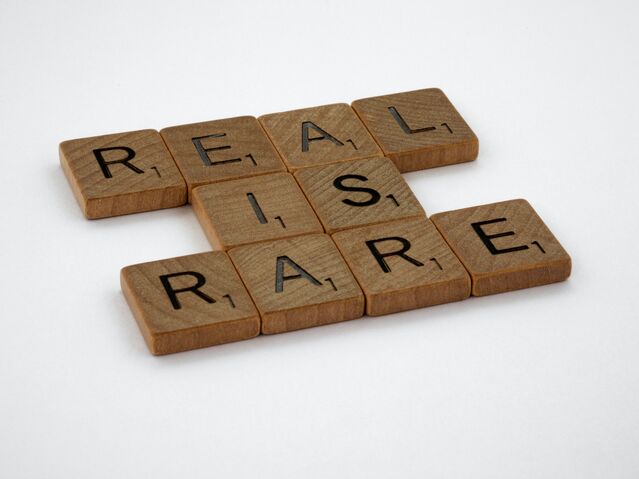Psychopharmacology
Being Real
Using self-disclosure as a tool for greater connection.
Posted June 7, 2021 Reviewed by Davia Sills
Key points
- Clients appreciate when psychotherapists are real.
- Self-disclosure is a powerful tool when used appropriately.
- Self-disclosure that is brief, authentic, and culturally-sensitive can make a greater impact.

"I would prefer asthma over schizophrenia any day," said Mike, begrudgingly.
The sinking feeling in my chest suggested an impending disaster. An attempt at relating with my client had backfired. Mike struggled with taking his medication regularly.
Many people with severe mental illnesses refuse to take medication at some point during their treatment (Velligan, Sajatovic, Hatch, Kramata, & Docherty, 2017). Black men are no different. Mistrust in the medical system exacerbates Black men failing to take measures to ensure optimal health (Powell et al., 2019).
Self-disclosure—or sharing personal information about yourself—is a controversial topic for therapists (Ziv-Beiman, 2013). Some argue that it helps, while others suggest that it may be harmful. Being eager to help, I tried to equate asthma with Mike’s perception of schizophrenia. I wanted to convey that just as I was required to take my inhaler, he had to keep up with his medication as well. Mike went on to express how he would much prefer asthma over schizophrenia. They are both serious health concerns. However, the conditions are viewed differently.
Mental health concerns have more stigma associated with them (Husain et al., 2020). One study of over 8,000 individuals found that it takes people 11 years from the time they start experiencing symptoms to the time they get treated (Wang, Berglund, Olfson, & Kessler, 2004). Stigma is a significant contributor to this problem.
Self-disclosure can be a powerful tool—when used appropriately—to reduce some of the stigma. There are many reasons why therapists utilize disclosure. Appropriate disclosure helps validate and normalize our client’s reality, offers different ways of thinking and behaving, and deepens the connection between us and our clients (Hill & Knox, 2001). It can also help us come across as more relatable; power differentials present significant challenges when working with male clients (Bichard, 2019).
Below are some considerations for what appropriate self-disclosure looks like:
Culturally sensitive
The use of self-disclosure can be problematic if it is based on cultural assumptions (Lee, 2014). As discussed in a previous article, culture goes beyond race and ethnicity. Our disclosure should only be used after we have a thorough understanding of the cultural factors that impact our client's worldview.
Authentic
Clients appreciate when we are real. Our professional licensure, certifications, and other indicators of clinical acumen sometimes create distance as opposed to allowing us to connect. Sharing something about ourselves—when relevant—can help minimize this barrier.
Client-focused
The goal should always be to help the client meet their needs as opposed to having our own needs met. My angst and need to be viewed in a favorable manner led me to indirectly tell Mike, "Hey, I have to take this medication as well. See, no big deal." It is a big deal. People who struggle with mental illnesses often experience shame and guilt in addition to the debilitating effects of the disorder. Further, I was not being real as I take my inhalers as needed (which is different than Mike’s case in that he is required to take his medication daily).
Brief
It is their session, not ours. If we are not careful, we may elicit a caretaking response from our client. As mentioned in an earlier article, good therapists are in therapy themselves to get their own needs met. Another point is that disclosure should not frequently happen for the same reason mentioned above.
Elicit feedback
It is important to carefully observe our client’s reactions (facial expressions, tone of voice, body language, etc.) to get a sense of how our self-disclosure affects them. Further, it helps to ask clients directly how they perceived our disclosure.
Some questions to be mindful of before disclosing are: What need is driving me to share this information (is it for me, or is it for the client)? How might this information be helpful? Is this helpful to share now (perhaps the disclosure may be better suited for a later time)?
I share this lesson to demonstrate that I am human and make mistakes. I made this error earlier in my career and still sometimes make mistakes today. However, I have found that mistakes can strengthen our alliance with clients if we are willing to admit them. Through self-awareness and honesty with ourselves, we can use these moments as opportunities to be real.
Fortunately, I was able to move forward in a manner that was productive for Mike. Consider using self-disclosure appropriately in order to make meaningful connections with your clients.

References
Bichard, T. (2019). How Young Men's Masculinity Affects, and is Affected By, the Counselling Process: A Psychosocial Analysis (Doctoral dissertation, University of Roehampton).
Hill, C. E., & Knox, S. (2001). Self-disclosure. Psychotherapy: Theory, Research, Practice, Training, 38(4), 413.
Husain, M. O., Zehra, S. S., Umer, M., Kiran, T., Husain, M., Soomro, M., ... & Husain, N. (2020). Stigma toward mental and physical illness: attitudes of healthcare professionals, healthcare students and the general public in Pakistan. BJPsych open, 6(5).
Lee, E. (2014). A Therapist's Self-Disclosure and Its Impact on the Therapy Process in Cross-Cultural Encounters: Disclosure of Personal Self, Professional Self, and/or Cultural Self?. Families in Society, 95(1), 15-23.
Powell, W., Richmond, J., Mohottige, D., Yen, I., Joslyn, A., & Corbie-Smith, G. (2019). Medical mistrust, racism, and delays in preventive health screening among African-American men. Behavioral Medicine, 45(2), 102-117.
Velligan, D. I., Sajatovic, M., Hatch, A., Kramata, P., & Docherty, J. P. (2017). Why do psychiatric patients stop antipsychotic medication? A systematic review of reasons for nonadherence to medication in patients with serious mental illness. Patient preference and adherence, 11, 449.
Wang, P. S., Berglund, P. A., Olfson, M., & Kessler, R. C. (2004). Delays in initial treatment contact after first onset of a mental disorder. Health services research, 39(2), 393-416.
Ziv-Beiman, S. (2013). Therapist self-disclosure as an integrative intervention. Journal of Psychotherapy Integration, 23(1), 59.




